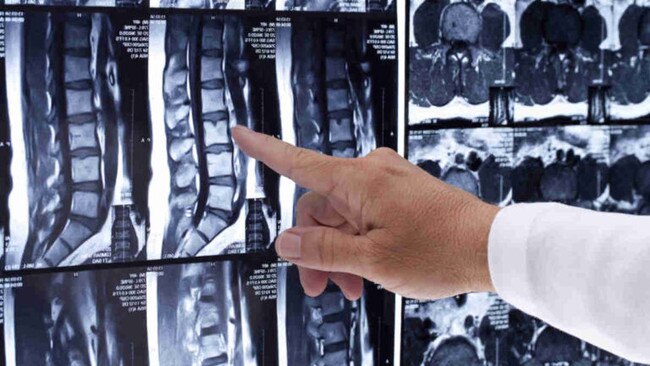Curvebeam AI CEO says medical devices beat drugs to revenue
Curvebeam AI’s boss says medical device firms have a key advantage in a healthcare sector experts reckon is oversold and has pockets of underpriced stocks.

Despite a recent rally, the ASX Healthcare Index (XHJ) is still down almost 10 per cent from 12 months ago.
Given the current environment, this is slightly puzzling as healthcare is fundamentally considered a defensive sector and has always been stable and recession-resistant.
Many experts argue the market is currently overlooking that aspect, and has oversold the sector to levels that might have created pockets of undervalued stocks.
For the latest biotech news, sign up here for free Stockhead daily newsletters
Medical devices companies for example, could well be underpriced.
Typically, medical device manufacturers deliver faster revenue growth than a traditional pharmaceutical biotech, due to the fact that clinical drugs take much longer to be approved than a device.
Greg Brown, the CEO of recently listed Curvebeam AI (ASX:CVB), said that medical devices companies could take advantage of an existing government reimbursement by simply staying within existing technology, but offering it in a totally new way.
“You can gain access to the already existing reimbursement that is there, and that’s a much quicker pathway to commercialisation,” Brown told Stockhead.
“And if companies can align or take advantage of a pre-existing reimbursement, it helps to take out the risk.”
Brown believes there’s a lot of opportunities here in Australia for medical devices companies to do just that, including Curvebeam AI.
CT scans that carry weight
Curvebeam AI listed last week at 48c after raising $25 million at the IPO round.
The company develops and manufactures a range of specialised medical imaging (CT) scanners and the supporting clinical assessment software.
Based in Melbourne, it’s known as a leader in cone beam CT imaging, paving new frontiers in artificial intelligence (AI)-based bone and joint analysis.
Curvebeam’s flagship product, called the HiRise, allows medical professionals and surgeons to assess the bone health (mainly of elderly patients) for fragility risk from foot to hip in a standing position.
Brown explained that CT scans of our joints, when done via a lying or non-weight bearing position, could erroneously show totally healthy and normal joints.
“A lot of people know they’ve got an issue, but it doesn’t come up on the CT scan when they’re lying down.
MORE FROM STOCKHEAD: Has common cold met its match? | Health stocks with catalysts coming | ASX companies out to master strokes
“But when they stand up, you can see exactly where the impingement is and the positioning of the bone, so doctors can see what’s going on in that joint,” said Brown.
This allowed a better diagnosis of the condition in the knee or ankle of the patient, and understanding of the surgery required.
At an initial capital cost of $US410,000 and assuming 10 scans a day, the payback period for HiRise users (excluding costs) is around 1 year and 5 months.
Curvebeam has placed 40 HiRise units in hospitals since receiving FDA clearance in late 2020, with 75 per cent of those in the US market.
The company is also developing a device called SkyRise to scan the upper half of a patient’s body, including the spine.
“Spine is by far the biggest anatomical issue, it’s around three-fold more prevalent than knee problems,” said Brown.
SkyRise, which allows doctors to look at both the shoulder and spine with a full body scan under natural weight-bearing, is expected to launch in 2026.
Using Artificial Intelligence Curvebeam AI’s products also use deep learning and artificial intelligence (AI), which eliminates all the manual steps a doctor would have to otherwise take in order to give recommendations to osteoarthritis patients.
Brown explained that 60 per cent of people with advanced osteoarthritis had an untreated fragility, with the No.1 risk factor being that a joint could loosen, come out, or even get fractured.
But when a surgeon decided surgery was required, they needed to do a bones mass density (BMD) test first, which calls for a trained operator – and a two or three-month waiting list.
“But now, instead of needing that trained radiologist, our AI platform runs all that automatically off the scan for the surgeon,” Brown said.
“All they need to do is press a button and they get the report, it takes about 20 minutes. The surgeon now gets a second billing, as well as the BMD results at the same time.”
Brown said that as a business, Curvebeam AI was a hybrid of hardware and software, and he believed there was a massive market to serve in our ageing population.
The company is initially targeting the US market, where it sees the prospect of strong sales growth in osteoarthritis diagnoses.
Its recent partnership with US distributor Stryker has enabled the company to immediately have 500 sales reps on the ground ready to penetrate the lucrative market.
“I also think it’s important for investors to note that I have invested $6.1 million of my own cash into this company,” Brown said. “My partner also has $15 million of his own cash in this.
“So we’re not doing this for the fun of it. We’re not asking investors to take a risk that we’re not willing to take.”
Visit Stockhead, where ASX small caps are big deals
Other ASX medical device stocks
MACH7 TECHNOLOGIES (ASX:M7T)
Mach7 is changing medical imaging focusing on enterprise solutions.
The company’s solutions are broken up into three modules: vendor neutral archive (VNA), universal viewer and workflow orchestration
CEO Mike Lampron said “the industry is still focused on radiology but slowly moving towards enterprise imaging”.
M7T was born in 2010 as a start-up company in Burlington, Vermont in the US, before listing on the ASX in May 2016 through a reverse merger with ASX listed 3D Medical.
NOVA EYE MEDICAL (ASX:EYE)
EYE is tackling two of the biggest diseases leading to blindness in the developed world – glaucoma and macular degeneration – and has a very strong presence in the US.
Headquartered in Adelaide, EYE’s business is 70 per cent in the US market, with the rest in Europe and China.
In April this year, EYE received US FDA clearance for its iTrack Advance canaloplasty device.
For more than a decade, Nova Eye’s proprietary iTrack canaloplasty microcatheter has been used across the globe, and the iTrack Advance is the next generation version of the device.
Sales in the USA for the three months through to July 31 were $US2.2 million, up 32 per cent on the pcp.
VOLPARA HEALTH TECHNOLOGIES (ASX:VHT)
The NZ-based medical imaging stock specialises in the early detection of breast cancer.
Earlier this year, the US FDA finalised a new federal regulation requiring mammography facilities across US to inform patients whether their breasts were composed of dense tissue.
The new regulation will significantly benefit VHT as nearly 40 million mammograms are performed each year in the US, with its software used to assess the breast density of more than 6 million annually.
In July, Volpara won the global Healthcare & Life Sciences Partner of the Year Award, chosen from a set of more than 4200 submitted nominations from more than 100 countries.
The award recognises a partner organisation that excels at providing innovative healthcare and life sciences solutions based on Microsoft cloud technologies.
EMVISION MEDICAL DEVICES (ASX:EMV)
EMVision has developed a potentially cost effective, portable, medical imaging device using electromagnetic microwave imaging for diagnosis and monitoring of stroke and other medical application.
In the June quarter, EMV was awarded $5 million in non-dilutive funding under the federal government’s MMI Medical Products Translation stream to establish commercial production of the first-generation brain scanner device.
Development of the second-generation device is progressing, with an advanced prototype for further bench testing and health human volunteer testing expected in the near-term.
MICRO-X (ASX:MX1)
MX1 produces a range of portable X-ray systems, most commonly used in healthcare applications such as aged care homes and military or humanitarian field hospitals.
It also makes a portable bomb detection camera, but the company says the brain CT market is worth a whopping $5 billion.
MX1 says it’s on track for the first human clinical trials of its Brain CT scanner at the Royal Melbourne Hospital in the first quarter of 2024, with the objective to confirm proof-of-concept for imaging of stroke patients.
CARDIEX (ASX:CDX)
CardieX develops the CONNEQT Pulse wearable that provides measurements of both brachial blood pressure (the pressure at the arm), and central blood pressure (the pressure at the heart/aorta).
The company nabbed DFA 510(k) clearance for the device earlier this year.
Now read: Strokes cost the Australian economy billions, but these biotech players could change that
This content first appeared on stockhead.com.au
At Stockhead we tell it like it is. While Nova Eye a Stockhead advertiser, it did not sponsor this article.
SUBSCRIBE
Get the latest Stockhead news delivered free to your inbox. Click here


